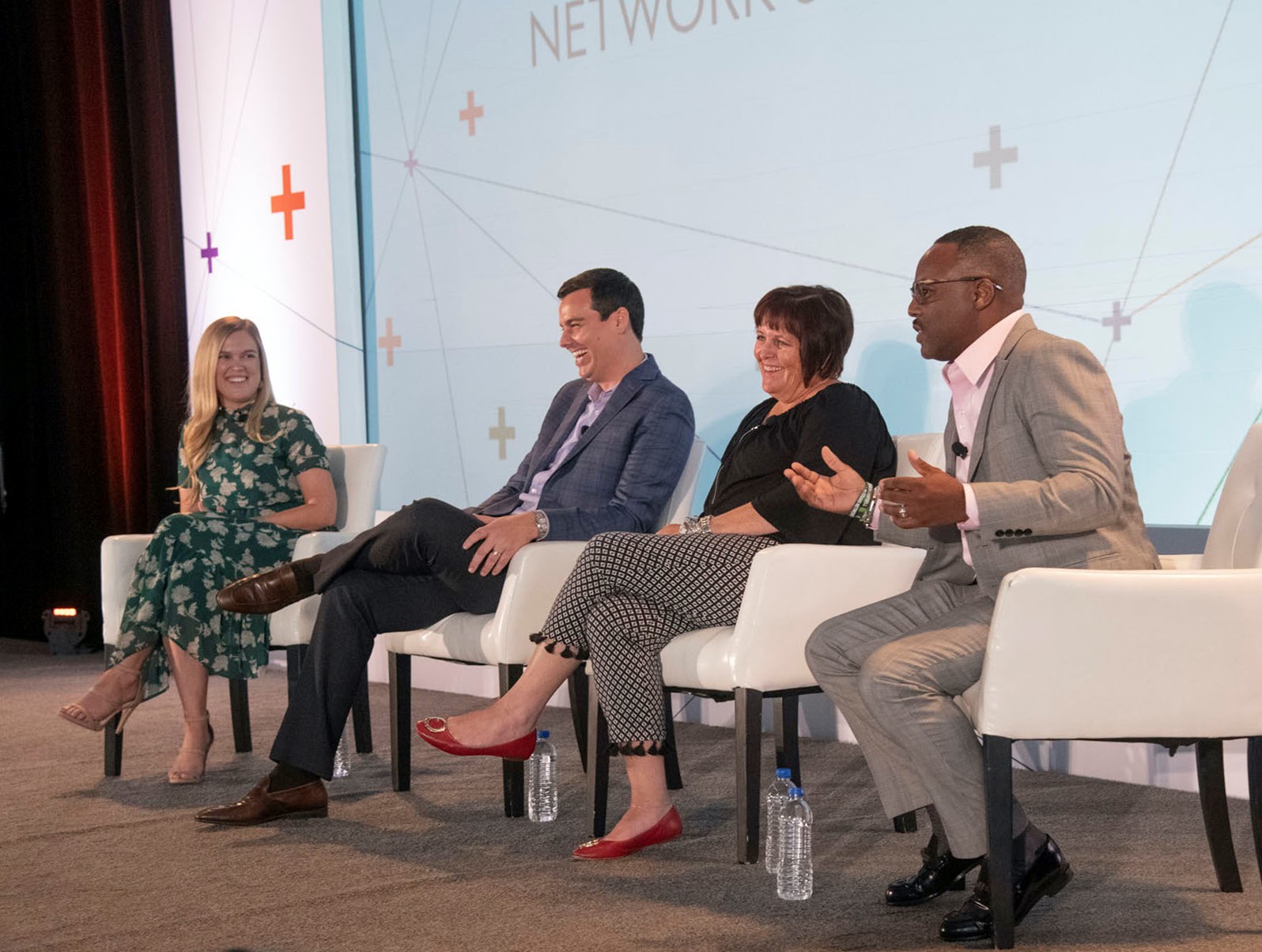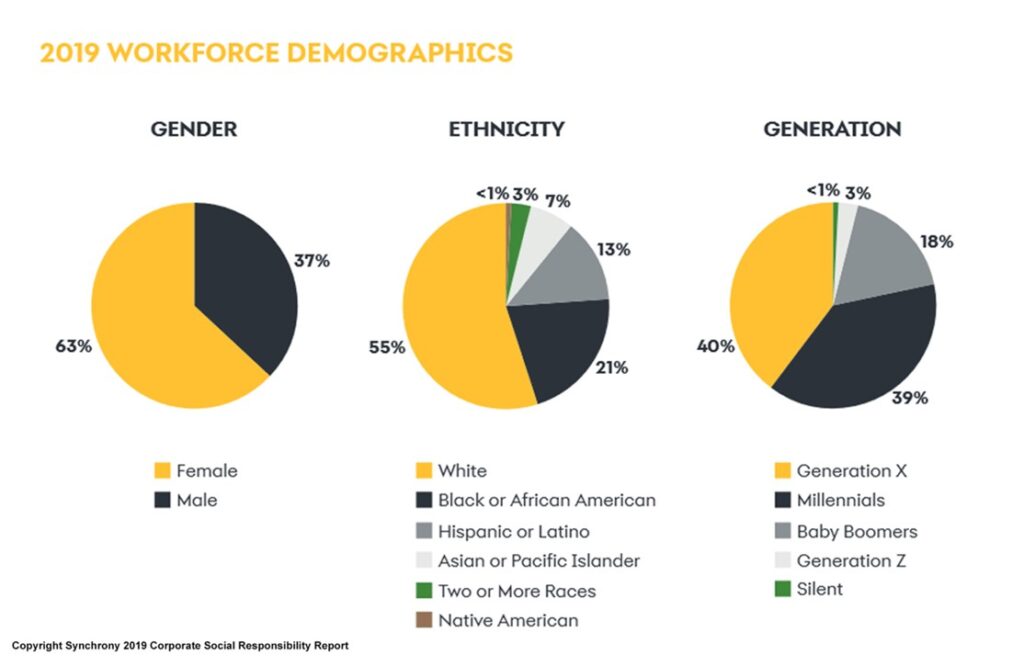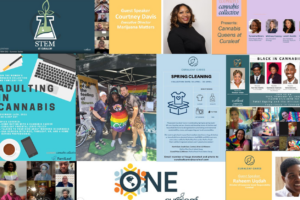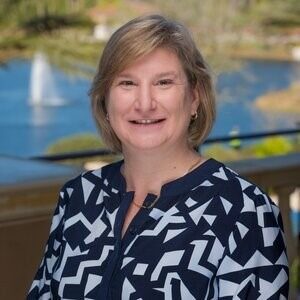This financial-services firm built DE&I accountability into its DNA
For Synchrony, the result was new programming that was fast-tracked and produced results.

After the social-justice protests of 2020, Synchrony Financial, which already had a foundational commitment to diversity and inclusion, and one of the most diverse workforces in its sector, knew it needed to do more. The company had a variety of DE&I efforts in place, but they were workplace-culture oriented, and in some instances provided only the appearance of progress.
So Synchrony, a $15 billion consumer-financial services firm based in Stamford, Connecticut, with 16,500 employees, decided it needed to strengthen its DE&I accountability across the board. “To succeed at driving progress over the long term, we recognized we need to treat DE&I no differently than we would any other critical business challenge,” CEO Margaret Keane told Fortune Magazine. “We elevated DE&I to one of our eight corporate strategic imperatives, with board-level accountability.”
Keane, now the outgoing CEO, was one of the few female chief executives running a top financial firm. She’ll be replaced next month by the current president, Brian Doubles.
Accountability, the company learned, is the critical ingredient in advancing DE&I efforts in any organization. Then measurement can be linked seamlessly to various initiatives and can be used, for example, in strategic reviews and leadership bonuses. Synchrony has done some of this, including creating a career-development program that’s been effective enough to spawn similar internal hiring initiatives.
One initiative that predated last year’s protests was a leadership-development program launched two years ago called Strategic Pathways. In February of last year, Synchrony evaluated the results, finding that of 58 participants, nearly half came out with new jobs or expanded responsibilities.
From the evaluation of Strategic Pathways came a sharper focus on diversity in hiring and promotion. This led to an effort to create an intentional and specific strategy for meeting diversity goals.
The result was a new leadership-development initiative called the Advancing Diverse Talent Leadership Institute, or ADTLI, into which Strategic Pathways was folded. This program focuses specifically on hiring, developing, and promoting senior talent that self-identifies as minorities, and has been nominated for potential leadership roles. ADTLI breaks down participants into two cohorts: employees who are one promotion away from senior vice-president and employees who are just stepping onto the VP-level rung. “We took all of this great talent that we thought had a great future, and we exposed them to leadership training, we gave them mentors,” says Synchrony Chief Diversity and Corporate Responsibility Officer Michael Matthews. “What ADTLI did was create different cohorts where we can be far more intentional and specific with the need.”

In the reimagined Strategic Pathways cohort, senior VP’s mentor employees for nine months, aiming to provide them with networking and opportunities to showcase their talents. In the ADT Fellows cohort, employees engage in more specific networking with Synchrony’s executive leadership team to learn the requirements for becoming a senior vice president.
The latest round of participants graduates in May. Already 35% have been promoted or received expanded roles. Twenty-nine employees are currently going through ADTLI, 21 in Strategic Pathways and 8 in the Fellows program.
A still newer pilot program emerged from the ADTLI experience, taking the same principles but going deeper into Synchrony’s pipeline to effect a more robust internal promotion channel.
Now, with a new emphasis on accountability, Synchrony can add clout to all of its programs. “When we talk about accountability, just having access to the data and tools has really increased the focus,” Matthews says.

With accountability built into its framework, Synchrony now links diversity metrics to annual performance reviews at the executive level. It holds an annual three-day diversity symposium with the networks to mingle and strategize. It created a DE&I Council, which aims to advance diversity faster with senior-level focus. Synchrony also created a diversity dashboard that measures attrition, hiring, conversion of talent, and different points in the hiring and recruiting process. HR leaders can pull real-time diversity reporting from a link on their computers. Statistics and searchable categories and positions are available daily. Twice a year, the executive management team gathers to look at the broader picture.
Among other things, the data helps alert leaders when something falls off track. Synchrony can better see where it’s doing well and where it isn’t. “It’s allowed us to be far more intentional,” Matthews says.
Synchrony has eight ERGs, representing these constituencies.
- African-American
- Asian
- Women
- Veterans
- LGBTQ+
- Native-American
- People with Disabilities
- Hispanic
All are invited to participate, even if they don’t identify with a specific group’s identity. More than 10,000 employees, or 60 percent, are in the ERG networks, which are used as policy consultants, such as when HR decides health and wellness plan benefits. “We have a philosophy at Synchrony that we believe in continuous improvement, so we’re never finished,” Matthews says.






